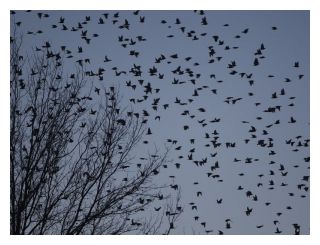
© ReutersBlackbirds descend on the town of Hopkinsville, Kentucky.
Millions of birds have descended on a small Kentucky city this winter, fouling the landscape, scaring pets and raising the risk for disease in a real-life version of Alfred Hitchcock's horror film,
The Birds.The blackbirds and European starlings blacken the sky of Hopkinsville, Kentucky, before roosting at dusk, turn the landscape white with bird poop, and the disease they carry can kill a dog and sicken humans.
"I have seen them come in, and there are enough that if the sun is just right, they'll cloud your vision of the sun," said Hopkinsville-Christian County historian William Turner. "I estimate there are millions of them."
David Chiles, president of the Little River Audubon Society, said the fact that migratory flocks are roosting in the city rather than flying further south is tied to climate warming.
"The weather, the climate plays a big role," said Chiles, the bird enthusiast who also teaches biology at Hopkinsville High School.
"They somehow establish a roost south of where the ground is frozen solid," he explained. "They are ground feeders, feeding on leftover crops and insects. If the fields are frozen solid, they can't feed."

Comment: The following articles give a much more in depth look at the issue of colony collapse disorder in bee populations around the world:
Honeybee Colony Collapse Disorder Finally Explained: Too Many Chemicals
Colony Collapse: Do Massive Bee Die-Offs Mean an End to Our Food System as We Know it?
More Evidence Rises Of Role Pesticides Play In Bee Colony Collapse
Harvard Study Links Pesticides to Colony Collapse Disorder in Bees
So called "Green Pesticides" pose reproductive threat to Honey Bees
Beekeeper outlines colony collapse disorder
Silent Hives: Colony Collapse Disorder and Pesticides
A Last (Chemical) Gasp for Bees?